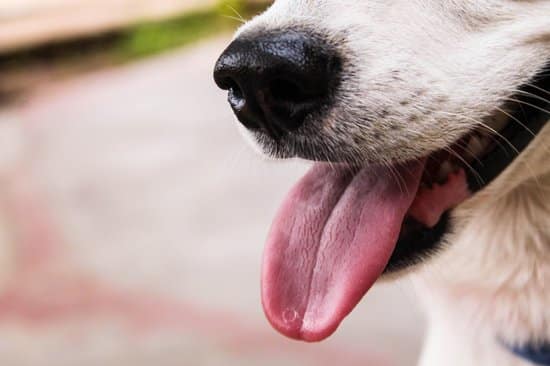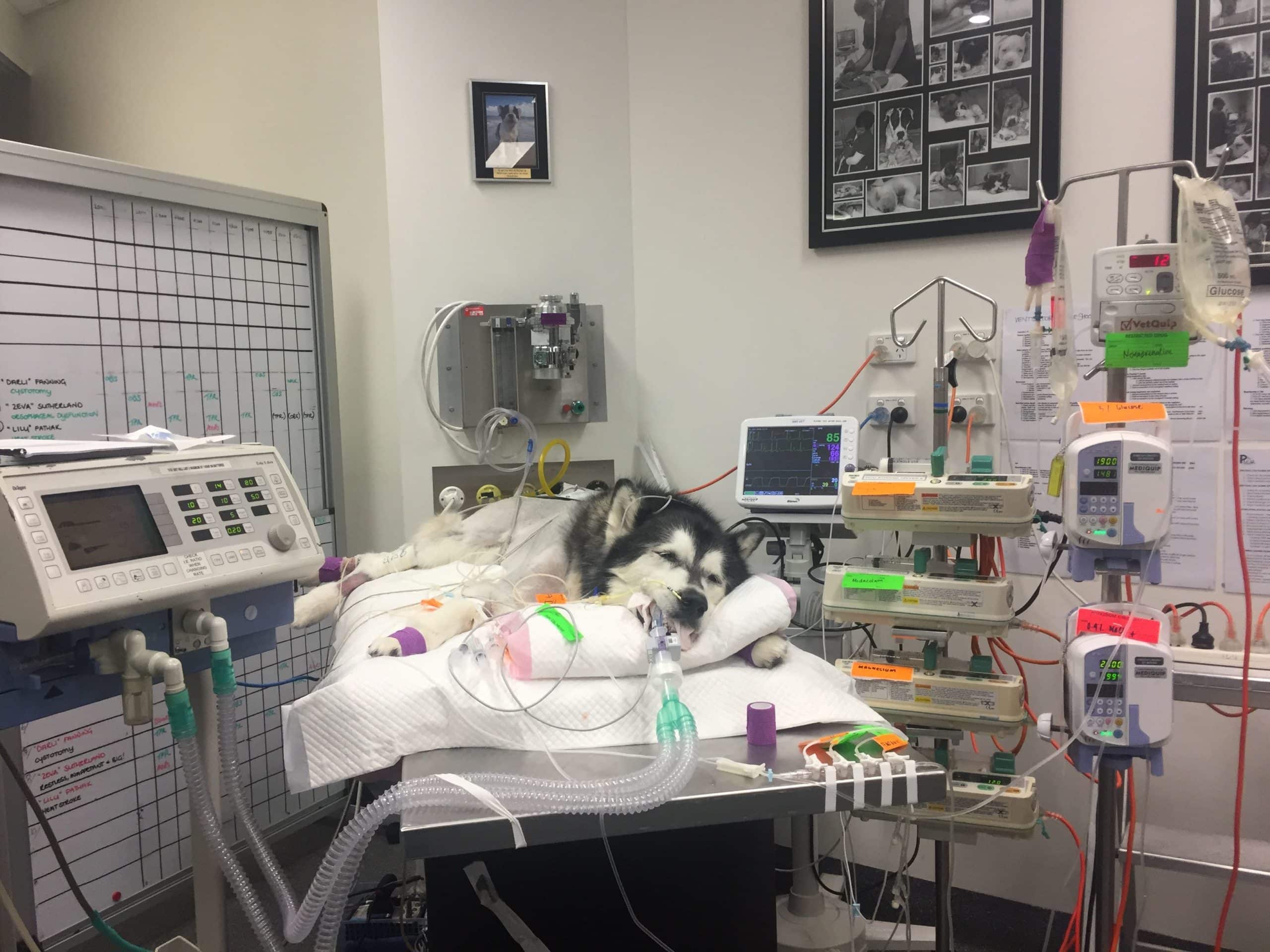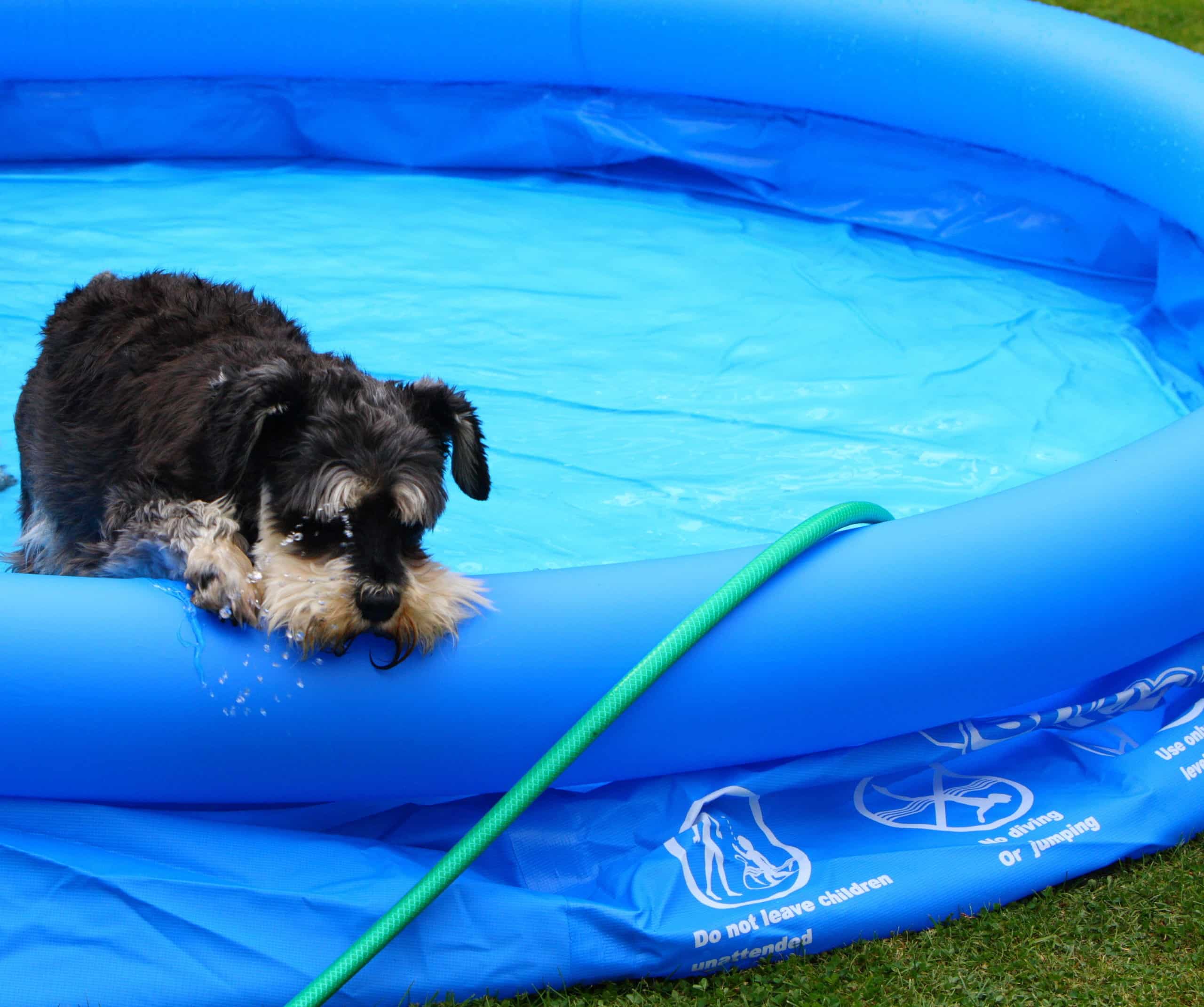Heat stroke in dogs – a common, life-threatening condition
Heat stroke is a serious and life-threatening condition seen all too often in vet clinics across the country. During the summer months, our Animal Emergency Service hospitals see a dramatic increase in the number of cases of pets suffering from heat stroke. Unfortunately, we have found many pet owners are unaware their pets can severely overheat to the point where it becomes life-threatening and often treatment is too late.
This guide will provide you with information on the causes, signs and symptoms of heat stroke, as well as treatment and tips to avoid heat stroke in your dog.
What you’ll learn
- What is heat stroke?
- Is heat stroke the same as heat stress and heat exhaustion?
- What are the signs and symptoms of heat stroke in dogs?
- Why does heat stroke occur? The main predisposing factors
- How long does it take for a dog to die of heat stroke?
- How do I treat heat stroke in my dog?
- How is heat stroke treated by vets?
- How to prevent heat stroke in your dog
What is heat stroke?
While more common in the warmer months, heat stroke can occur at any time throughout the year. However, it can occur suddenly and without much warning.
Unlike us humans, dogs and cats don’t respond to heat in the same way. We humans regulate our body temperature through the many sweat glands all over our bodies. Dogs and cats, however, only have a few sweat glands located in their paw pads and around their noses. In order to cool themselves, our pets release heat primarily by panting. The sweat glands in their paw pads and noses do help with dispersing heat but only minimally.

Dogs pant in order to cool their body temperature
When our pets aren’t able to cool themselves through panting, hyperthermia (and heat related illness) can occur. Hyperthermia is when the body’s core temperature increases above its normal range of 39.0 degrees Celsius.
Is heat stroke the same as heat stress and heat exhaustion?
There are three different types of hyperthermia. While many people use these terms interchangeably there are differences between the conditions each varying in their severity.
- Heat stress is associated with increased thirst and panting. The patient is mentally aware and is generally able to move about. For a more in depth look into the signs and symptoms of heat stress, visit our Heat Stress in Dogs blog.
- Heat exhaustion is a more severe form of heat stress. It is associated with a significant increase in thirst, general weakness and heavy panting. Patients are also found to be mentally aware but too weak/tired to react, and may not be able to move around or may collapse.
- Heat stroke is the most severe type of hyperthermia. It occurs when your pet’s temperature reaches 41.1 degrees or higher. At this temperature neurological, and organ dysfunction and failure occurs. Once their temperature reaches 43 degrees or higher, it melts the proteins which make up the foundation of all the cells in the body. While there is no definite point at which these systems fail, higher temperatures and longer periods of heat exposure will lead to more organ dysfunctions and possible risk of death.
The effects of heat stroke are devastating, and in all cases, even in suspected heat stroke, immediate treatment is needed as every second makes a significant difference to the outcome.
What are the signs and symptoms of heat stroke in dogs?
There are a number of signs and symptoms of heat stroke in dogs to look out for. Signs and symptoms will quickly progress, becoming more severe and can lead to death. The early signs of heat stroke dogs will exhibit include, some or all of the following:
- High body temperature
- Restlessness or agitation
- Excessive panting or difficulty breathing
- Drooling, often very thick saliva
- Change in gum colour (dark red, pale, purple, or blue)
As the condition worsens, signs and symptoms progress to include:
- Vomiting or diarrhoea (possibly with blood)
- Increased heart rate
- Lethargy or collapse
- Dizziness – are they struggling to walk in a straight line?
- Muscle tremors
- Seizures
- Unconsciousness
While not as common, cats can in fact develop heat stroke. Symptoms and signs of heat stroke in cats is very similar to what dogs exhibit, however there are a couple of signs and symptoms that are unique to cats.
Why does heat stroke occur? The main predisposing factors
There are numerous factors and situations which contribute to why heat stroke occurs in dogs. These factors are mainly around environmental conditions, however, some pets are at increased risk due to their breed or pre-existing medical reasons.
Environmental factors
Contributing environmental conditions include:
- High temperatures
- High humidity
- Lack of adequate airflow/ventilation
- No access to or inadequate shade
- No access to or inadequate drinking water
- Excessive exercise
- Not used to hot weather. Dogs can take up to 60 days to acclimatise to significant changes in temperature
- Pets left in closed homes/garages with no air conditioning
- Pets left in cars. Even on mild days or with the window down temperatures can rise quickly
Breed and pre-existing medical factors
While all pets can be at risk of heat stroke, there are some pets that are more susceptible to heat stroke. These pets include:
- Small animals, including birds, guinea pigs, rats and mice, rabbits, and ferrets. The reason being these animals are often confined to cages and hutches and are unable to move to cooler places. It is important to ensure during hot weather they are moved into cool, shaded and well-ventilated areas with plenty of drinking water. Draping cages with wet towels and proving an icepack or frozen water bottle for them to lean against to regulate their body temperature will assist in giving them relief.
- Extremes in ages (young and old)
- Thick or long-coats retain the heat
- Overweight and obese dogs
- Large breed dogs
- Extremely active, or working and hunting dogs, such as shepherds and retrievers
- Brachycephalic breeds, otherwise known as short-nosed and flat-faced animals. Their smaller and narrower nostrils, long soft palate, and under-developed and smaller airways combine to prevent efficient airflow, which means they struggle to cool themselves. These breeds include pugs, English bulldogs, French bulldogs, Pekingese, and Persian and Himalayan cats. Brachycephalic breeds are 146% more likely to suffer from heat stroke than any other dog breed. This needs to be taken into consideration, as simply sitting at a cafe with your pup on a hot day and cause heat stroke.
- Those who have a respiratory disease or breathing problems, such as laryngeal (vocal cord) paralysis, or a collapsing trachea
- Dogs who have heat problems/cardiovascular disease
- Dogs with a neurological disease
- Dehydration

Puppies are at a higher risk of developing heat stroke
How long does it take for a dog to die of heat stroke?
While there is no set length of time as to how long it takes for a dog to die from a heat-related illness, death can occur within an hour. This is especially the case for dogs that are predisposed to heat stroke. However, there have been cases where a dog has passed away in as little as 15 minutes from the onset of a heat stroke.
Heat stroke results in multi organ failure, for every organ that is affected, the prognosis decreases by 25%. If left untreated, recovery from heat stroke is almost non-existent. Some dogs can fully recover from heat stroke if it is caught and treated early enough. Others can suffer permanent damage to their organs and require lifelong treatment.
How do I treat heat stroke in my dog?
Heat stroke is a serious life-threatening condition, which requires immediate treatment to increase the chances of survival. If you believe your pet is suffering from heat stroke and is showing any of the above signs or symptoms, follow these steps and immediately see a vet:
- Remove your dog from the hot environment
- Gradually lower your dog’s body temperature by wetting them down with a hose or bucket (avoiding their face), a fan blowing over damp skin will help in evaporative cooling. Do not wrap a wet towel around them as it will trap the heat trying to escape
- Don’t use ice baths (this can cool them too rapidly and cause constriction of the blood vessels lowering their cooling ability)
- Wetting down the areas around your dog can also help in lowering the ambient temperature
- Offer water
- See a vet immediately. Even if your pet looks to be recovering or you only suspect they have heat stroke, it is important to see a vet.
How is heat stroke treated by vets?
POnce you arrive at your local vet or nearest animal emergency hospital, the vet/s will assess the severity of your pet’s heat stroke and then begin emergency treatment as required. Treatment for heat stroke can be complex and often includes long stays in hospital. Treatment may include:P
- Emergency cooling, especially if your pet’s body temperature is still high
- Intravenous fluids to treat dehydration, shock, and to cool the body down internally
- Oxygen therapy
- Anaesthesia and airway intubation for pets that are having breathing difficulties or are unconscious
- Gastric protectants and anti-nausea medication in cases of vomiting and diarrhoea (as the gut may slough and start to die)
- Antibiotics to prevent secondary sepsis (blood poisoning)
- Pain relief
- Cardiac medications if required
- Blood tests to assess the severity of dehydration, to test for clotting, assess organ function, and monitor response to treatment
- Blood or plasma transfusion for those with clotting problems
- Ongoing monitoring and treatment, usually in the intensive care unit

In severe cases of heat stroke ventilation may be needed
How to prevent heat stroke in your dog
PHeat stroke is preventable. As well as being aware of the signs and symptoms so as treatment can be administered immediately, ensure your pet/s are kept in appropriate environmental conditions. These include:P
- Never leave pets unattended in parked cars
- Plan car trips – keep the car cool, ensure frequent stops and water is available
- Avoid exercise during the warmest times of the day
- Ensure there is plenty of cool water and shade available
- Don’t leave pets inside hot, closed homes or garages
- Avoid walking pets on hot sand, concrete, bitumen, or any other surfaces where heat is reflected
- Keep your dog well hydrated with easy access to water
Tips to keep your dog cool
Australia is known for its extremely hot summers, and while we keep cool with air conditioning, cool drinks and dips in the pool, we also need to help keep our pets cool too. Here are some tips on how to keep dogs cool in summer:
Paddling pools are a good way for your dog to keep cool
Dogs travelling on the back of a car are susceptible to burning their paw pads and other parts of their body from contact with the ute tray which can get extremely hot in the sun. Consider covering the trays with a suitable material to provide a shaded area.
- Be aware of sunburn, particularly in pets with white, non-pigmented skin and a white-coloured coat. Fair complexion pets will need animal-specific sunscreen and zinc for protection from the sun’s rays.
- Treat your pet to a cooling mat or even cool a ceramic tile or baking tray in the fridge or freezer for them to lie on
- Give frozen treats like dog ice blocks (pupsicles)
- Fill extra bowls of water in case one is knocked over
- Place ice in water bowls to help keep cool
- Let your pet play in paddling pools. Place a clamshell or inflatable pool outside for your dog to wade in to keep cool.
- Get creative with exercise by creating cool games, and water play (like homemade water sprinklers)
- Be aware that muzzles can restrict dog’s ability to pant, which is necessary for them to cool themselves
If you suspect your pet has heat stroke, visit your nearest Animal Emergency Service hospital or your local vet immediately.


